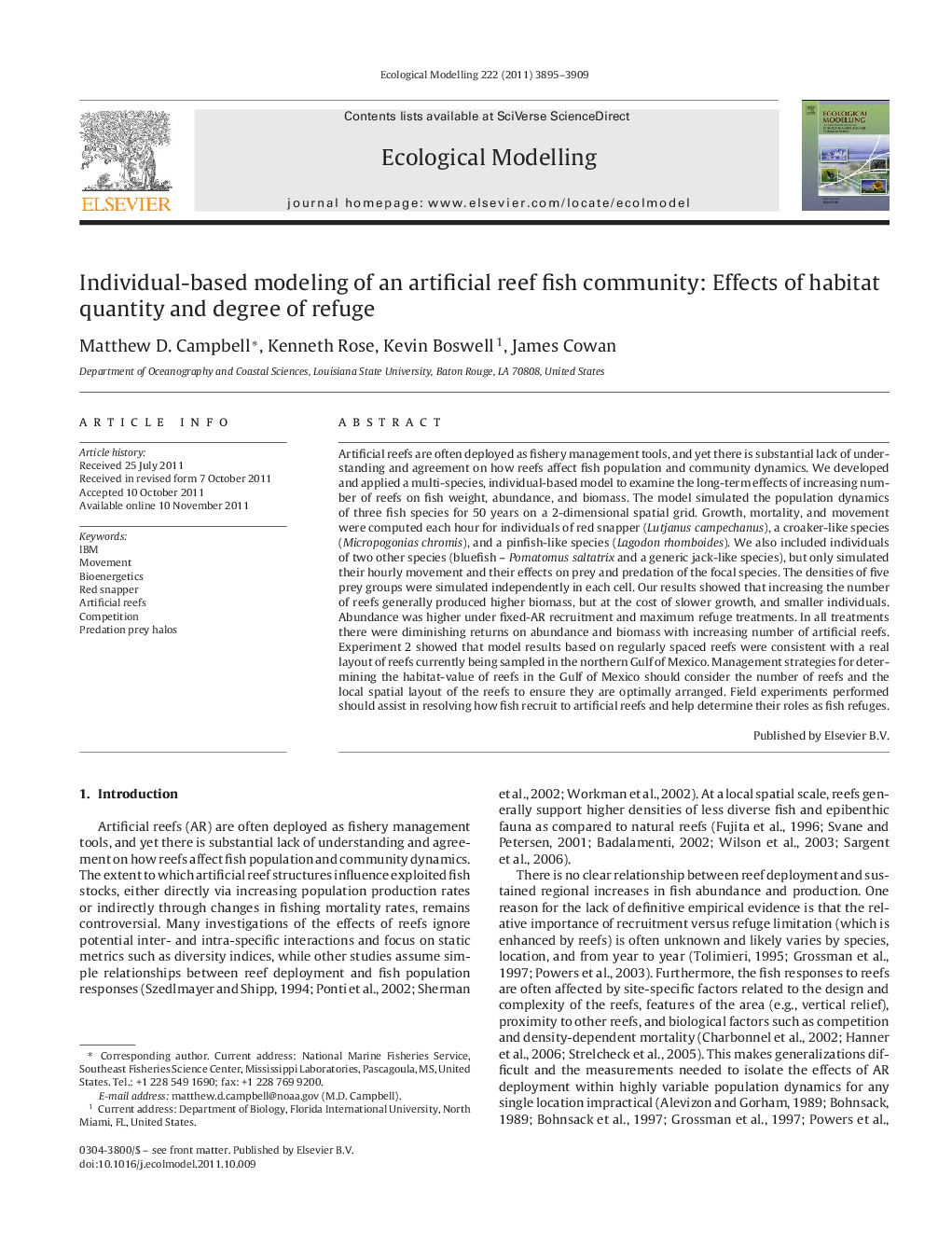| کد مقاله | کد نشریه | سال انتشار | مقاله انگلیسی | نسخه تمام متن |
|---|---|---|---|---|
| 4376739 | 1617519 | 2011 | 15 صفحه PDF | دانلود رایگان |

Artificial reefs are often deployed as fishery management tools, and yet there is substantial lack of understanding and agreement on how reefs affect fish population and community dynamics. We developed and applied a multi-species, individual-based model to examine the long-term effects of increasing number of reefs on fish weight, abundance, and biomass. The model simulated the population dynamics of three fish species for 50 years on a 2-dimensional spatial grid. Growth, mortality, and movement were computed each hour for individuals of red snapper (Lutjanus campechanus), a croaker-like species (Micropogonias chromis), and a pinfish-like species (Lagodon rhomboides). We also included individuals of two other species (bluefish – Pomatomus saltatrix and a generic jack-like species), but only simulated their hourly movement and their effects on prey and predation of the focal species. The densities of five prey groups were simulated independently in each cell. Our results showed that increasing the number of reefs generally produced higher biomass, but at the cost of slower growth, and smaller individuals. Abundance was higher under fixed-AR recruitment and maximum refuge treatments. In all treatments there were diminishing returns on abundance and biomass with increasing number of artificial reefs. Experiment 2 showed that model results based on regularly spaced reefs were consistent with a real layout of reefs currently being sampled in the northern Gulf of Mexico. Management strategies for determining the habitat-value of reefs in the Gulf of Mexico should consider the number of reefs and the local spatial layout of the reefs to ensure they are optimally arranged. Field experiments performed should assist in resolving how fish recruit to artificial reefs and help determine their roles as fish refuges.
► We model the long-term effects of increasing artificial reef on a small fish community.
► Distinct tradeoff between abundance/biomass and growth.
► Increased reef number increased biomass and abundance with diminishing returns.
► Regularly spaced reefs were consistent with a real layout of reefs currently being sampled.
► Management strategies for determining the habitat-value of reefs should optimize spatial layout.
Journal: Ecological Modelling - Volume 222, Issues 23–24, 10 December 2011, Pages 3895–3909